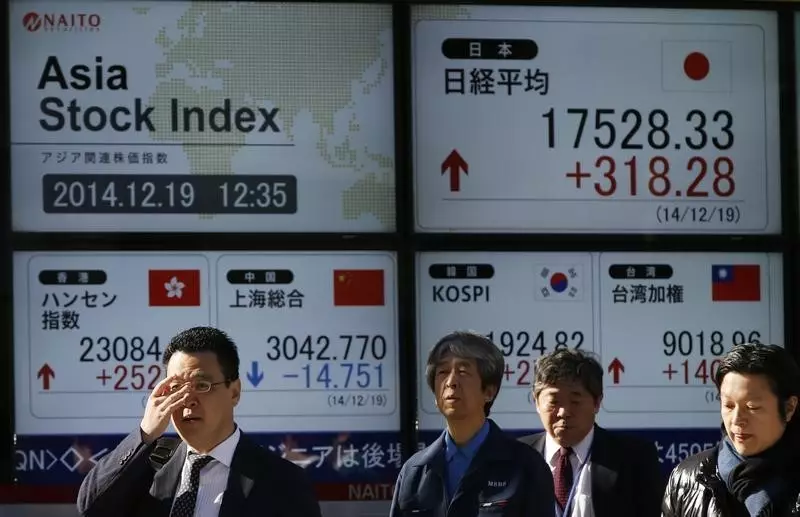As we approach the end of the year, the Asian stock markets are reflecting a general sense of unease that has been exacerbated by disappointing economic indicators, particularly from China. Following a relatively lackluster year-end performance on Wall Street, many Asian stocks have continued this trend of decline. The subdued trading environment has greatly affected various markets, drawing attention to the economic challenges facing the region. With Japan and New Zealand markets shuttered for the New Year holiday, the broader landscape appears notably dimmer.
The sharp decline in Chinese stocks has been particularly alarming, marked by the 1.3% fall in the Shanghai Shenzhen CSI 300 and a 0.9% dip in the Shanghai Composite index. These reductions coincide with freshly released data indicating that the country’s manufacturing activity has not only underperformed but has done so in a hawkish economic landscape. The private Purchasing Managers’ Index (PMI) points toward sluggish growth in December, suggesting that stimulus efforts by the Chinese government are losing effectiveness.
This disappointing PMI report was further confirmed by earlier government data, hinting at a broad consensus among economists that the manufacturing sector’s expansion has not kept pace with expectations. As investors clamor for clearer signals from Beijing regarding future fiscal policies and stimulus measures, the recent economic activity raises the question of when, or if, substantial recovery will be observed.
Hong Kong’s Hang Seng index recorded an alarming 1.7% drop, driven largely by Berkshire’s decision to divest from Sun Art Retail. This move led to a staggering decline of over 30% for the retail giant’s shares. Alibaba’s strategic exit has unmistakably shaken investor confidence, compounding the market’s pervasive woes. Meanwhile, the Straits Times Index in Singapore held steady but was not immune to broader economic constraints. A report revealing humdrum growth in Singapore’s economy—with minimal quarterly expansion—revealed the challenges posed by sluggish global demand and a slowing Chinese economy.
Despite posting an annual growth rate of over 4% for 2024, the final quarter saw a laggard 0.1% growth—significantly below the expected 2%. The contrast between yearly gains and recent performance spotlights the uncertainties that lie ahead for various sectors.
As Asian markets grapple with their unique challenges, external factors present additional headwinds. The looming threat of an escalating U.S.-China trade conflict compounds the already complex situation. Incoming U.S. President Donald Trump’s promises of heightened tariffs have sent shockwaves across regional markets, raising concerns about a potential trade war that could severely impact the Asian economy.
Furthermore, the Federal Reserve’s recent indications of fewer rate cuts in the upcoming year due to persistent inflation issues cast a shadow over the financial climate. The implication is that borrowing will remain expensive, which could slow down economic recovery efforts throughout the region.
Compounding these economic concerns is the political unrest in South Korea. The recent impeachment of President Yoon Suk Yeol, after declaring martial law only to retract it swiftly, has sent ripples of uncertainty through South Korean markets. The political instability is likely to deter both domestic and foreign investment, leading to further economic stagnation in an already troubled market.
Asian stocks are currently navigating a turbulent set of challenges, from disappointing economic indicators and investor uncertainty in China to external pressures from potential U.S. tariffs and domestic political strife in several countries. As the economic landscape continues to evolve, it remains crucial for investors to remain vigilant of both local and global developments while seeking potential opportunities in an ever-changing market environment.

